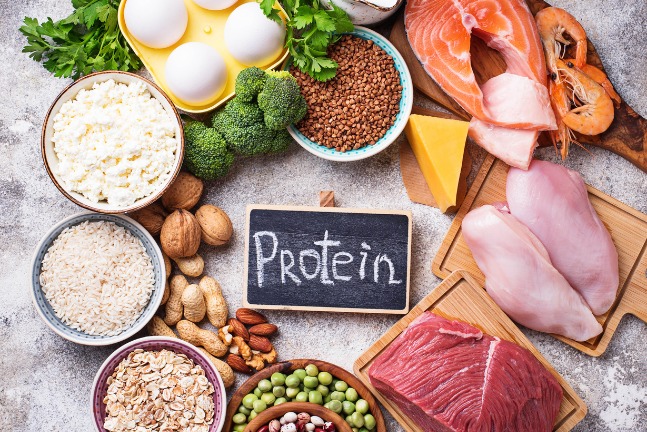What are macronutrients?
If you’re looking to make the biggest possible change to your nutrition, you’re probably aware that it’s only a matter of time until you see the word ‘macros’. From health blogs to social media, the term macros makes a regular appearance.
Macros is an abbreviation of macronutrients, which helps categorizes a type of food needed for a healthy diet. Macro, meaning ‘of great size; large’ tells us that this nutrient category is required in large amounts, relative to ones diet.
We need macronutrients to give us energy and keep us strong, and to help our bodies to grow, repair, function and perform best.
The components of macronutrients are: carbohydrates, fat, and protein. But we often forget that water should also be included as a key component. Each component contains a unique set of properties that influences our health, but all are a source of energy. Most recently, researchers have diverted attention away from energy, to investigate how these macronutrients effect the brains reward signals, and our relationship with food.
Almost all foods are made up of macronutrients, in varying amounts. For example, a banana is made up of 93% carbohydrates, 3% fats, 4% protein, so even though a banana contains a percentage of other macros, they are categorized as healthy carbohydrates. Another example: avocados consist of about 18% carb, 79% fat, and 3% protein, which makes them a healthy source of fat.
If you want to make the biggest possible change to your nutrition, you have to get comfortable with these essential building blocks, in order to function optimally.
Spend a few extra seconds to kickstart your macronutrient knowledge. In this post we cover the three key macros, in bite-size chunks, to inspire confidence – and your results!
Protein

is an essential macronutrient, that differs from the others due to a nitrogen and amino group. Dietary protein is made up of different combinations of 20 amino acids. Here are some of the most important things to know about protein.
Protein:
- Contains 4 Calories per gram
- Is not all created equal and must contain the nine essential amino acids to be deemed a ‘complete protein’
- Provides amino acids for the building of muscle tissue
- Forms of enzymes, chemical messengers, and structural components in the body
- Needs are generally underestimated
- Should be consumed at 0.6 – 0.8 grams per lb. of healthy weight (or ideal weight if overweight/obese)
- Is safe and has not been shown to have negative health effects in healthy populations
Carbohydrates

are the primary energy source in the body. They are constructed up of simple sugars, called monosaccharides. The three monosaccharides are glucose, fructose, and galactose.
Carbohydrates are not technically essential for human life as we can produce energy from both fat and protein. There is, however, no getting around the fact that they produce energy most efficiently for our muscles. This is an important fact to highlight to individuals considering the ketogenic diet.
Yes, the body will transition to fat oxidation and ketone production for energy, but you won’t be able to reach the same intensities in exercise as when consuming carbohydrates.
Here are some of the important Carbohydrate factoids:
- They contain 4 kCals per gram
- The glycemic index is a measure of the effect that carbohydrates have on blood sugar levels
- Simple carbohydrates are mono- (one) and di-saccharides (two) that are more quickly absorbed, utilized as energy, or stored as fat
- Complex carbohydrates are oligo (several) or poly-saccharide (many), linked together, usually in a branched structure. These need to be broken down into simple sugars before they are absorbed, and include starchy grains and vegetables
- It is recommended that we consume between 40 – 60% of our total Calories as carbohydrates. For athletes, a more specific recommendation of between 3-12 grams per kg should be used, based on daily output levels
Fats

are made up of three fatty acids attached to a glycerol backbone. They are a secondary source of energy and provide many more times the energy content than carbohydrates. However, for a variety of reasons that are not completely understood, this process is much less efficient than with carbohydrates.
There are 4 different classifications of fat:
- Saturated
- Monounsaturated
- Polyunsaturated
- Trans
Here are some of the important things to know about fats:
- Fat contains approximately 9 kCals per gram
- Crucial for incorporation into cell membranes, production of hormones, and absorption of essential vitamins (A, D, E & K)
- Saturated fat is made up of fatty acids that have carbon atoms that are fully saturated with hydrogen. For this reason, they are solid at room temperature e.g. chocolate, baked goods, coconut, etc.
- Trans fats are those that are synthetically hydrogenated, making them more stable.
- Unsaturated fatty acids are versatile and flexible, they include omega-3, -6 and -9 fatty acids which can contribute to cognitive function, cardiovascular health and muscle function
- It is generally recommended that we make up consume 15 – 30% of our Calories as fat. Of this, we should consume no more than 30% of this as saturated fat.






